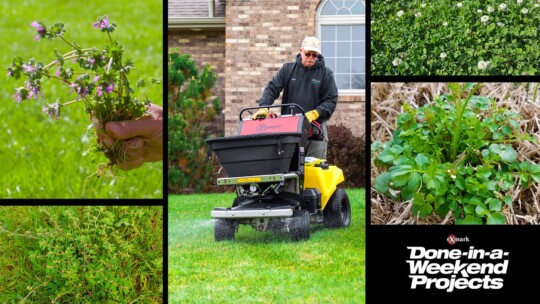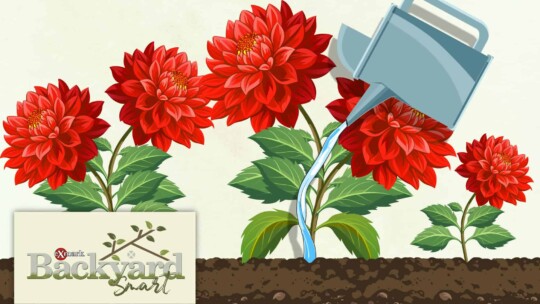When planning and planting, it’s tempting to beautify the base of your trees with plenty of mulch, plants, and flowers. However, going overboard can have dire consequences. So, follow along in this episode of Backyard Smart to get the lowdown on how to properly landscape around trees.
Soil
When landscaping around trees, it’s important to maintain the existing soil level near the trunk. Soil that’s packed too high retains excess moisture, which causes bark rot. This rot invites further disease and pest infestation—both of which pose a threat to the health of any tree. And, because the soil holds in excess moisture, that means it withholds water from reaching the roots, which can cause them, and your tree, to dry out.
If you’re considering establishing a bed around your trees, make sure to clear out any grass. Grass can cause thick thatch, which winds up blocking water and oxygen from reaching the roots of both plants and trees.
Plants
While selecting plants to landscape around trees in your yard, knowing what kind of sun exposure they’re built for is key. Some trees allow dappled sunlight, making it a perfect spot for part sun or part shade plants. And, some trees don’t allow any sunlight whatsoever, making for a great place to plant full shade plants, such as ferns and hostas.
But don’t go plant crazy! Give the base of your tree some space so both it, and your plants, can all get their fair share of light, nutrients, air, and water. Likewise, you need to be mindful of your tree’s roots when planting. Some trees—such as white oak and hickory—send down deep roots, meaning you’re okay to plant a tad closer. Others—like maple and cypress—have roots that’re just beneath the surface (and sometimes even grow above ground). So, make sure to give them plenty of space so you don’t risk cutting into any roots—a potential death sentence for even the healthiest trees.
Mulch
The sight of freshly laid mulch just can’t be beat. However, there are plenty of rules when it comes to putting it down at the beginning of the season. Keep new mulch around the base of a tree no more than two to three inches thick. Your tree’s roots will absorb the lion’s share of the water, so this layer of mulch will keep it readily available for the plants. This helps free up more time by reducing the amount of watering you have to do, so you can spend even more enjoying your other outdoor pursuits.
Careful! Don’t go overboard when laying down mulch. Piling too much against the tree trunk creates a “mulch volcano”—which has the same impact as laying too much soil around the base. So, as a rule of thumb, leave at least two inches of space around your tree to ensure the best health. Even if it’s not touching the trunk, don’t lay down too much mulch—especially around young trees. Again, like soil, overly thick mulch holds in excess moisture and nutrients that your tree needs to thrive.
Additional Landscaping Considerations
Bricks and rocks can create a beautiful border around a tree or garden bed—or even act as an amazing alternative to plants. They save time on plant care and are perfect for keeping the areas around your trees tidy. And, they help beautify the base of trees that have roots poking through the ground, which would otherwise make planting difficult.
It’s tempting to use a layer of landscaping fabric or plastic sheeting to prevent weeds from poking through your newly laid rock border or garden. However, like mulch, you need to give your tree some space if using either of these weed-fighting tools. They might hold weeds back, but they also keep oxygen and water from reaching your tree’s roots.
That’s it! Now that you’ve been given the lowdown on how to landscape around trees, all there’s left to do is get outside, get landscaping, and think about the trees.



